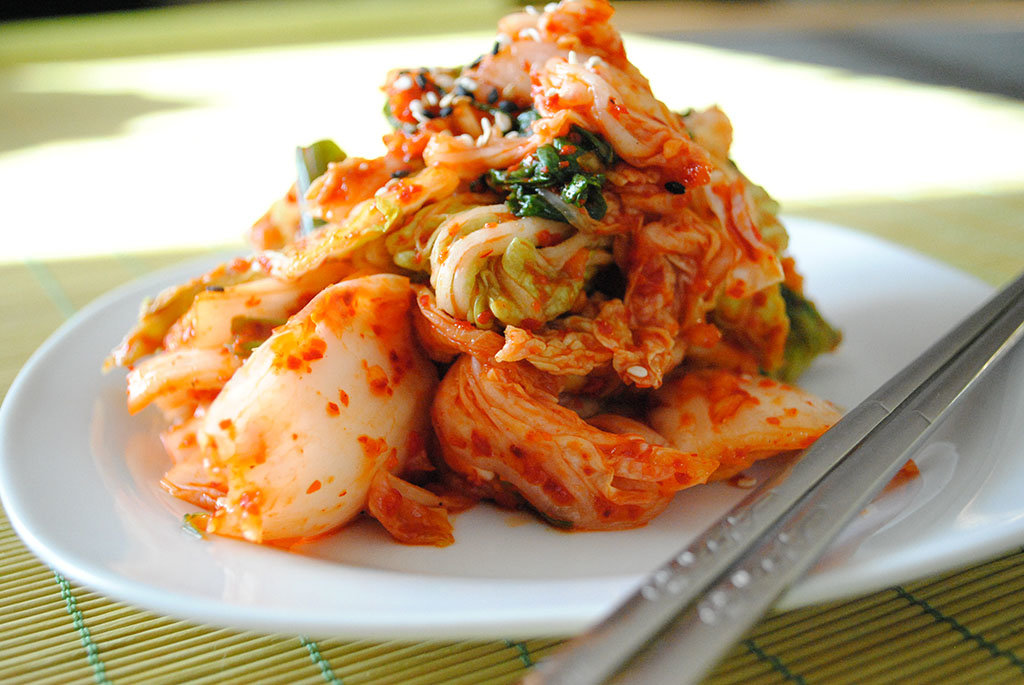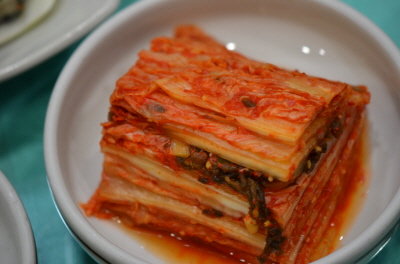If asked to name the first Korean food which springs to mind, a response from many might be ‘kimchi’. And with good reason, too. Kimchi is eaten as a side dish at almost all Korean mealtimes, and rice, soup, and kimchi often constitute a quick but healthy meal. But how is the famous fermented cabbage side dish made? What exactly does the process entail?

‘Kimjang’ – the process of preparing cabbages for fermentation into kimchi – traditionally takes place over several days starting sometime in November each year. Family members from far and wide will often gather together to spend time preparing several hundred cabbages to last the winter through. Although kimjang as a community practice has died down in recent years, it still holds deep cultural and familial meaning for many. So much so, that it was listed as a UNESCO Intangible Heritage in 2013.
What is the kimjang process?
First, the cabbages are chopped into halves or quarters and salted thoroughly, with both pure sea salt and brine, before being left for 30 minutes and rinsed. Sometimes the cabbages are left overnight to further pickle in the salt brine.
The spices – or ‘yangnyeom’ – are prepared by mixing red pepper powder, radish, green onions, mustard powder, ginger garlic, anchovy brine, and mini shrimps, either fermented or fresh. Some choose to also add sweet fruits such as pears or persimmons, depending on their particular family recipe and the taste they would like to achieve.

The cabbages are then stuffed with this spicy, fruity, salty paste, starting from the outside leaves and finishing at the middle of the cabbage. Traditionally, stuffed cabbages are stored for the entire winter in earthenware pots called onggi. These days, households tend to store their kimchi in large plastic containers or glass jars, either at room temperature, or in their special kimchi fridge.
The stuffed kimchi can be left to ferment for anywhere between a couple of days, to up to two months. Young kimchi tastes very fresh, and sometimes quite bland, while older kimchi can really pack a punch! Kimchi left in the refrigerator takes much longer to acquire a strong, fermented taste.
Once ready, kimchi is used as a side dish and an important ingredient in a great number of Korean foods, from kimbap, to kimchi jiggae (kimchi stew), bokkumbap (fried rice), as an accompaniment to samgyupsal (Korean barbequed pork), and samhap (fermented skate, pork, and kimchi) tofu, and much, much more.

To gain a unique insight into the Kimjang process, why not join a Gastro Tour Seoul Kimchi cooking class? For more information, visit here or email info@gastrotourseoul.com
